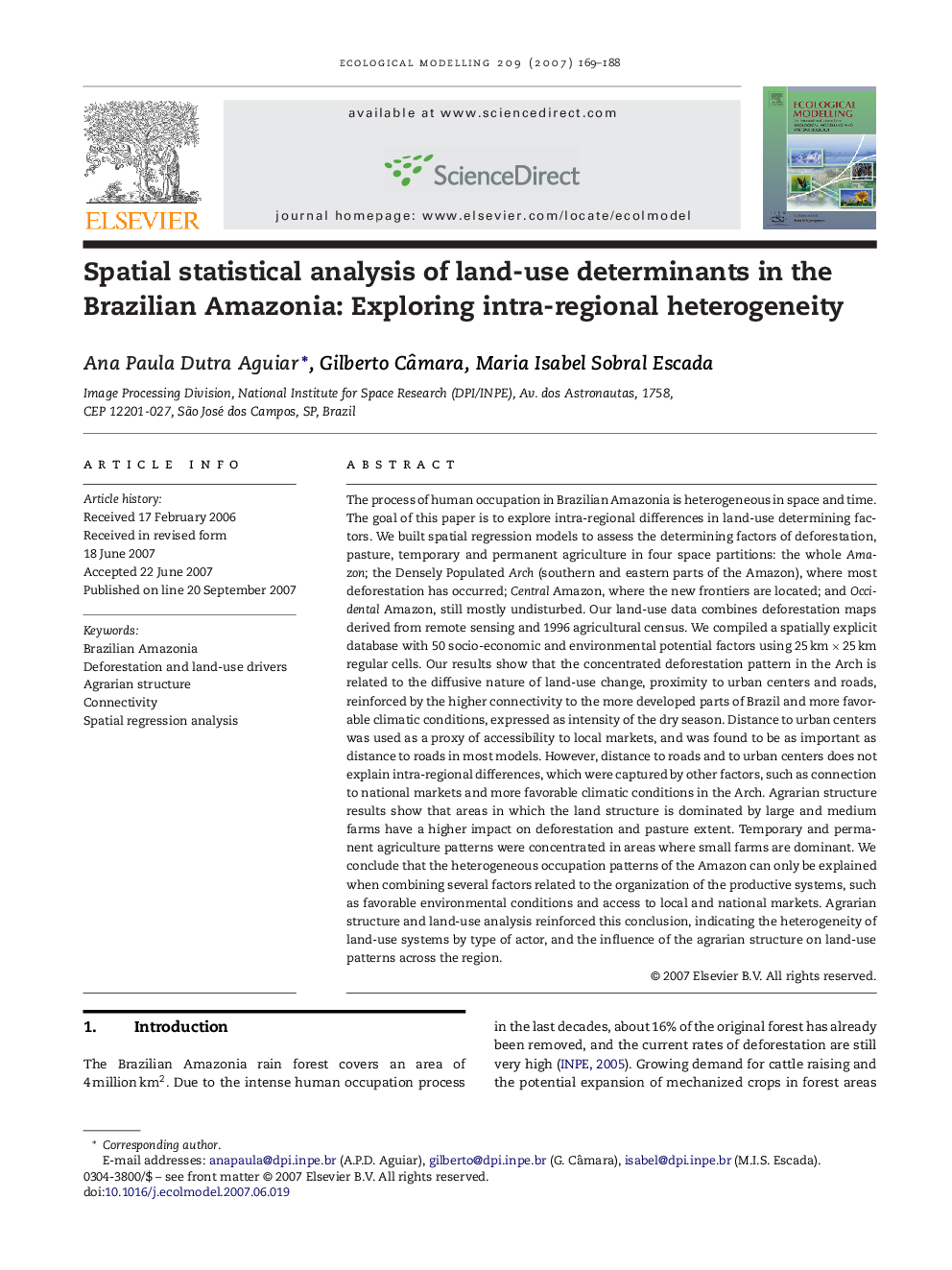| Article ID | Journal | Published Year | Pages | File Type |
|---|---|---|---|---|
| 4378521 | Ecological Modelling | 2007 | 20 Pages |
The process of human occupation in Brazilian Amazonia is heterogeneous in space and time. The goal of this paper is to explore intra-regional differences in land-use determining factors. We built spatial regression models to assess the determining factors of deforestation, pasture, temporary and permanent agriculture in four space partitions: the whole Amazon; the Densely Populated Arch (southern and eastern parts of the Amazon), where most deforestation has occurred; Central Amazon, where the new frontiers are located; and Occidental Amazon, still mostly undisturbed. Our land-use data combines deforestation maps derived from remote sensing and 1996 agricultural census. We compiled a spatially explicit database with 50 socio-economic and environmental potential factors using 25 km × 25 km regular cells. Our results show that the concentrated deforestation pattern in the Arch is related to the diffusive nature of land-use change, proximity to urban centers and roads, reinforced by the higher connectivity to the more developed parts of Brazil and more favorable climatic conditions, expressed as intensity of the dry season. Distance to urban centers was used as a proxy of accessibility to local markets, and was found to be as important as distance to roads in most models. However, distance to roads and to urban centers does not explain intra-regional differences, which were captured by other factors, such as connection to national markets and more favorable climatic conditions in the Arch. Agrarian structure results show that areas in which the land structure is dominated by large and medium farms have a higher impact on deforestation and pasture extent. Temporary and permanent agriculture patterns were concentrated in areas where small farms are dominant. We conclude that the heterogeneous occupation patterns of the Amazon can only be explained when combining several factors related to the organization of the productive systems, such as favorable environmental conditions and access to local and national markets. Agrarian structure and land-use analysis reinforced this conclusion, indicating the heterogeneity of land-use systems by type of actor, and the influence of the agrarian structure on land-use patterns across the region.
